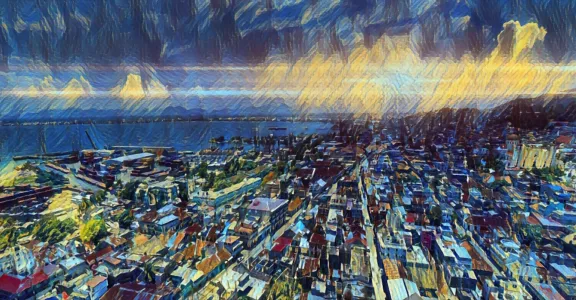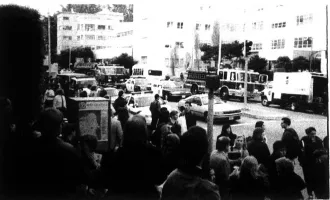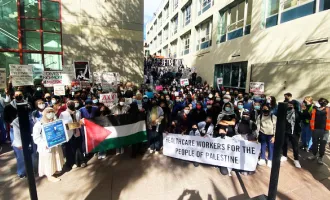
Upholding Haitian Dignity: On Briefly Contextualizing the Ongoing Crisis in Haiti, Part Three
Humanizing Politically-Imposed Trauma and Pinpointing Growth Areas
Introduction
Part One recounted Haiti’s founding and world-inspiring Revolution. Part Two analyzed foreign interference in Haiti —highlighting Napoleonic gassings of Afro-Haitians, French extortion, and American imperialism, along with the Dominican Republic’s (D.R.) mass killing, denationalization, and volatile deportations of generations of Haitian-Dominicans and immigrant Haitians.
These events helped create a frame of reference from which Haiti’s ongoing political crisis, as signaled by late President Jovenel Moïse’s recent assassination, can be better understood.
Part Three highlights the often-hidden impacts of colonial and neighboring states’ actions. In addition, this Part touches upon some growth areas for Haitian leadership, as exemplified, in part, by some of the accusations that were lodged against the Moïse administration.
To be clear: holding Haiti accountable for its leadership shortfalls, which have their roots in resource deprivation, in no way frees outside powers from their obligation to undo the harm done through their numerous, longstanding crimes against the country.
In other words, when it comes to analyzing Haiti’s ongoing ordeal, more than one group of actors can, and perhaps should, be held responsible for the nation’s problems, with varying levels of accountability.
Also, the attention given to poverty, in arguing that imposed deprivation has harmed Haiti’s growth, is very different from, and unaligned with, the “culture of poverty” idea popularized during the second half of the 20thcentury, and which recently made a 21st century comeback.
On the one hand, the belief that people must single-handedly make something of themselves, take control of their destinies, and assume utmost responsibility, appears level-headed, intuitive, and even inspiring. On the other hand, this potentially unforgiving, if not narrow-minded, emphasis on responsibility can weaken social bonds, undermine communal harmony, on top of fostering isolation, inwardness, and hypercriticism, of the self and others.
An overemphasis on personal responsibility is what some thinkers have relied on to argue that people living through difficult circumstances are solely responsible for the ill-fated fruits of their labors, while also ideologically denying the existence of economic inequality.
Extending hyper-individualistic arguments to poverty may suggest that large-scale interventions are useless, supposedly because human beings are the sole, or most influential, shapers of their lived experiences.
At a fundamental level, this piece rejects the straightlaced, presumptive interpretation of individual responsibility, in favor of a more nuanced, compassionate understanding —as human agency is multi-faceted, in being necessarily tied to social positioning and other forces.
In other words, factors relating to systems, places, and societies provide meaning-making, and judgment-shaping, clues that must be considered, if judgments about unfortunate outcomes are to at all be made.
In applying this context-responsive view, Haiti’s scarcity-related challenges have their roots in the losses and trauma that the country has suffered at the hands of other powers.
Haiti’s struggles are not the result of its culture, or value system, as “culture of poverty” enthusiasts have argued(and as detailed later on) —in, for instance, writing that “Haiti won’t prosper until it abandons [its] culture of poverty.”
To use a short, and representative, analogy: a formerly-thriving individual could struggle when confronted with losses and injuries, caused by hurtful acts of theft and violence. Failing to take issue with these acts, to instead blame the hypothetical victim, either for the manifestation or extent of that person’s consequent troubles, would draw attention away from the need for justice.
The same goes for Haiti. Its stumbling has resulted from the troubling actions of other powers; and this segment highlights pain points that should be resolved for the country to recover, after detailing some hostilities’ effects.
The Growing Baby Analogy
The French, American, and Dominican actions, as previously detailed, inflicted multi-faceted harm on Haiti because they robbed the country of its treasury funds. And without monetary resources, Haiti has not been able to grow.
Unjust acts, in the form of slavery, genocide, extortion, and anti-Black isolationism have debilitated and traumatized the country.
In being only 217 years old, Haiti can be said to have suffered developmental, situational trauma, relating to its public purse, economic activities, and politics. And this trauma has been lived through by generations of impoverished Haitians who have had to cope with the aftereffects of genocides, hostile military actions, along with persistent economic and political adversity.
To, again, use an analogy: if Haiti were an infant, in light of its relative youth, it would be no surprise that this baby would struggle with its growth were it to lose access to the vital nutrients that it would need to thrive.
And even if such a hypothetical child were to outlast its steadfast deprivation, derivational, if not lifelong, effects would be expected.
Similarly —in an often-hidden and defining way —France, America, and the D.R. have subjected Haiti to institutionalized and traumagenic, or durably traumatic, harms.
In being nonliteral and purely illustrative, the above analogy is, in no way, intended to infantilize Haiti, by denying the country its cultural, political, and economic maturity. Instead, its core idea is that Haiti’s growth has been stunted and the effects that have emerged therefrom have taken many forms, particularly at the institutional level.
American occupation, for instance, robbed Haiti of important self-governance experience. Similarly, French extortion deprived the country of the funds it needed, shortly after Independence, to finance the provision of public goods as well as maintain sound institutions. At last, in denationalizing Haitian-Dominicans and immigrant Haitians, the D.R. left Haiti bearing the costs of extensive repatriation.
D.R.’s history of anti-Haitian discrimination along with its anti-Haitian immigration policies have also seized from the two countries the opportunity to engage in mutually-beneficial activities. Despite the horrors of the Parsley Massacre, and subsequent anti-Haitian actions undertaken by Dominican politicians and judges, some Haitian and Dominican nationals have remained trading partners.
If nothing else, the anti-Black, anti-Haitian, and, thus, racist, denationalization action, and subsequent deportations, undertaken by the D.R. served to keep the two countries culturally and economically farther apart than they could have otherwise been.
Crucially, and according to Dominican activists, hostile anti-Haitian actions have also marginalized the more than 800,000 Haitian-Dominicans living in the D.R.
Claims Regarding Haiti’s Supposed Cultural Defects
The economic and political instability that Haiti has experienced are clear signs of its vincible, and thus nonterminal, traumatized past —and not the result of an intrinsic defect tied to its culture.
Despite claims to the contrary, or arguments anchored in theological and political ponerology, or evil studies, Haiti’s ongoing political hardships are also not the result of the country’s embrace of its African roots, as manifested in the liturgy, or rituals, of its vodou religion.
Some religious communities, within and outside of Haiti, have repeatedly advanced the claim that, given its Afro-Creole pantheon (set of gods), vodou is the source of Haiti’s problems, in being tantamount to devil worshipping. For instance, American Christian minister and professor, Lance Beauchamp, has argued that vodou’s syncretism, or belief-mixing, entails Haitians’ “attempts to ‘cover their bases’ in satisfying all ‘gods’,” in an attempt to get religious protection from evil forces.
According to Beauchamp, “in the country of Haiti, Roman Catholicism is often mixed with voodoo and other cultic/occultic practices because the people live in fear of evil.” And Beauchamp maintains, by implication, that Haiti’s religious, and thus cultural, reliance on vodou fits within a larger pattern of theologically-troubling forms of worship observed almost exclusively in developing countries.
In Beauchamp’s words, in the realm of “spiritual warfare or demonic activity, there seems to be a prevalence of such activity in underdeveloped countries, whereas in developed countries, these are rare.”
An argument of this type, proclaiming that Haitians are engaged in vodou-mediated “demonic activity,” serves not only as an additional example of the anti-Haitianism discussed in earlier parts of this piece but also as evidence of the view that Haiti is plagued by some mysterious cultural defect.
While religious groups have tied Haiti’s problems to its allegedly sinful commitment to vodou, others have blamed Haiti’s woes on its “culture of poverty,” as hinted at previously and further developed below.
According to thinkers in this camp, “The sad truth about Haiti isn’t simply that it is poor, but that it has a poverty culture. … Absolutely, it has been exploited, abused, and betrayed ever since its days as a slave colony. …. [However,] Haiti will never get out of grinding poverty until it abandons much of its culture.” This thinker, Jonah Goldberg, makes this claim without at all spelling out the supposed shortcomings of Haitian culture, leaving it to American readers to figure out what he means by this, in a piece entitled “Tough Love Needed for Haiti.”
The above two arguments, with the latest one being theological and the first one being sociological, have a lot in common, in that they indirectly target Haiti’s character.
With Amerindian, European, and African components, Haiti’s roots are reflected not only in the country’s most-practiced religion, vodou, but also in the cultural traditions that early Afro-Haitians imported from Africa, to form a resistant and multi-cultural Afro-Caribbean culture.
Without question, Haiti suffers from no distinctive cultural pathology, with the country embodying a humanity that is fundamentally undeniable.
And even from a ponerology-oriented, if oddly evil-focused, perspective, Haiti is arguably no more politically violent than its neighbors.
In lectures and other oral exchanges as part of which commentators have contrasted Haitian bloodshed with violence encountered elsewhere, such as in the U.S., multiple arguments have been advanced to contend that Haiti is no more violent than its neighbors.
For instance, and perhaps most convincingly, the U.S. kills hundreds of Black people annually. Not only is “The rate at which black Americans are killed by police … more than twice as high as the rate for white Americans,” “961 people have been shot and killed by police in the past year,” with most of them being “young” and “male.”
Though no comparable figures exist for Haiti, a contrast of the two countries’ 2020 crude death rates reveals that Haitians and Americans die at roughly the same rates, according to World Bank data. On a per-1,000-people basis, while 8.4 Haitians, in 1,000, died in 2020, a slightly higher number of Americans, 8.7, lost their lives —despite Americans having had an at-birth life expectancy that is 14 years longer than that of Haitians, on average.
Also, in pointing out that Haiti is no more violent than the U.S., commentators have claimed that while 180 American school shootings transpired during the past decade, few, if any, of these events occurred on school grounds in Haiti. In further proving this point, in 2021, a year for part of which many kindergarten-to-12th-grade schools have been closed, “there were at least 43 incidents of gunfire on school grounds, resulting in 12 deaths and 19 injuries,” across the U.S. A search of newspaper and news network records reveals that, in Haiti, there has been no such violent occurrence.
Lastly, although founded only 27 years before Haiti won its independence, America has killed four of its sitting presidents. Moreover, “Attempts have thus been made on the lives of one of every five American Presidents.… Since 1865, there have been attempts on the lives of one of every four Presidents and the successful assassination of one of every five.” Though Haiti has not done much better, fewer Haitian leaders, whether emperors or presidents, have suffered such a tragic fate.
While four sitting U.S. presidents —Abraham Lincoln, James A. Garfield, William McKinley, and John F. Kennedy —have been assassinated, three (too many) Haitian leaders —Jean-Jacques Dessalines, Vilbrun Guillaume Sam, and, very recently, Jovenel Moïse —have met such a fate.
Together, these facts, among others, could be presented to show an absence of a cultural defect in Haiti, by using comparison reasoning to argue that Haiti is no more violent the U.S., a leading world power. Upon being raised, these facts and contentions would suggest that despite its many instances of violence, Haiti is like almost any other country, in having had its people grapple with violence.
While these arguments might, on their own, fail to convince some people, their roots in oral, and partially-written, discussions should not give them less weight. Any criticism should be substantive.
In exchanging ideas, generations of Haitians have prioritized oral, as opposed to written, expression, owing to factors related to Haiti’s revolutionary spirit and linguistic history.
As a Creole, or Afro-European and Caribbean, language, Haitian Creole (English for “Kreyòl Ayisyen”) “developed on plantations from the forced contacts between the European masters and their African slaves.” With a grammatical structure established by dominated Black slaves and a lexical, or vocabulary, base imposed by dominating French colonizers, kreyòl, the first Caribbean vernacular, or spoken dialect, to have earned the status of an “official” language, has existed “in a complex political and social relationship to a ‘standard’ language, in this case French.”
Considering that “For most of its history, kreyòl has been a language of oral expression,” the language did not transition to its written form until “the late 18th century, when kreyòl was used for both official and literary purposes.” And it was not until the late 20th century that Haitian officials used kreyòl for political or administrative purposes.
On the whole, despite remarkable aspects of Haitian history, relating to Haiti’s language, vodou religion, or the country’s political path, Haitians are fundamentally like every other group of human beings on earth.
Furthermore, the country’s hardships are caused by exploitation imposed by outside powers, not cultural forces.
Foreign Intervention Reconceptualized as Trauma
In adopting a more direct, health science standpoint, countless studies have documented the lasting and transgenerational effects of various forms of trauma.
As a result, any argument —that French, American, and Dominican subjugation, or discriminatory treatment, occurred some time ago and should therefore have no effect on today’s Haitians —fails.
Leaving out studies that deal specifically with Haiti, the relevant literature and empirical evidence, on the multigenerational effects of trauma, along with the harmful psychosocial effects of anti-Black racism and colonialism, are extensive.
And the evidence demonstrating the adverse effects of racial trauma, or race-based traumatic stress, is robust and, thus, undeserving of criticism that reduces it to the over-medicalization of a social problem with historical roots.
When looking for studies tackling Haiti’s predicament, a shortage of work emerges, leaving out the present-day effects of Haiti’s traumatic past. The current dearth of studies can probably be explained by the research design- and data- related limitations presented by colonial exploitation and genocides.
In the case of Haiti, and concerning genocide, data specifying the number and manner of deaths, as well as the identity of the descendants of survivors, are absent. In fact, even photos, footage, or other forms of documentation relating to the massacres that Haitians suffered across Haitian history are hard to find.
For instance, the 1929 Marchaterre massacre carried out by U.S. Marines, who fired on thousands of Haitian peasants protesting high taxation during America’s occupation of Haiti, has been scantly documented.
Also, in the vein of exploitation, Haiti’s treasury has been majorly plundered by external actors, hampering the cultivation of a robust, trauma-informed research program.
Given the shortage of studies concerning Haiti’s history, evidence from outside of the country might help to illuminate the effects of Haiti’s racial trauma.
In focusing on the anti-Black racism and anti-Haitianism that Haiti’s people have experienced at the hands of American, French, and Dominican outsiders, one finds that racial discrimination’s negative effects and individuals’ prejudicial treatment based on their race, are well-known.
Turning to health, and going beyond economics, murder, and politics, experiences with racial discrimination have been tied to “negative mental … and physical (e.g., hypertension, thickening and calcification of the arteries, and heart rate variability) health outcomes.” Interestingly, and importantly, these negative health outcomes have been documented with data, independent of individuals’ genders, socioeconomic statuses, or ages.
Across societies, discrimination manifests at levels that are structural and individual.
Whereas structural discrimination limits the overall resources of marginalized groups, individual discrimination hinders private and institutional interactions between human agents.
In either form, individual and structural discrimination can result in intentional, and unintentional, harm.
Based on various aspects of Haitian history, as detailed above and in Parts One and Two, the discrimination with which Haiti has had to grapple has entailed the structural type, in light of the country’s resource reduction. Haitians have also experienced individual discrimination, resulting from individual citizen actions spurred by the anti-Haitian sentiments circulated by ex-President Donald Trump, Regent University Chancellor Pat Robertson, and anti-Black bias, as documented in Parts One and Two of this three-part series.
In both forms, discrimination functions as a social stressor that carries long-term physiological costs, in leading to the development of an irregular heartbeat and anxiety, for example.
Therefore, Haitians who have faced structural and individual discrimination have suffered harm to their health given the discrimination they have suffered by virtue of their racial and national identities.
Looking Within Haiti
Fundamentally, despite the abuses it has suffered at the hands of foreign powers, Haiti can succeed, although doing so will conceivably require persistence.
Also, achieving meaningful success will require the country to specifically understand the source of, as well as repair, its institutional fissures, in the face of multi-faceted and enduring obstacles.
In looking inward to realize change, and starting with post-Independence, early 19th century Haiti, the country’s underdeveloped agricultural capacity is partly attributable to Haitian Founding Fathers’ decision to move Haiti toward subsistence, instead of systematic, intensive farming.
Other internal challenges, secondary to the harms caused by foreign powers and which have kept Haiti from flourishing, have entailed internecine political conflict —starting with Haiti’s Founding Fathers, and their successors, vying for power.
The issue of political conflict between Haitians is still relevant today and entails an area in which Haitian leaders must grow, through finding unison.
Also, in present-day Haiti, an over-reliance on charcoal is contributing to major deforestation, soil erosion, and subsistence farming.
Though Haitian leaders have contributed to these failures, it is crucial to reemphasize that Haiti’s problems are anchored in French extortion and American occupation, as these acts deprived Haiti of the resources it would have needed to guard against these troubles.
Poverty has markedly undermined the maturation of Haitian institutions, particularly in the realm of anti-corruption.
A recent, and well-known, Haitian corruption case consisted of a Haitian senator allegedly buying a multi-million-dollar Montreal villa, with money earned in Haiti, where the average citizen earns fewer than $3 a day.
Famously, it has been reported that a number of Haiti’s former leaders have deprived the country’s treasury of large sums of money.
Jean-Claude Duvalier has, for instance, allegedly looted between 400 to 900 million U.S. dollars from Haiti, whereas Jean-Bertrand Aristide has allegedly embezzled unquantified millions.
The Moïse Administration
In circling back to Moïse, the late Haitian head of state did face accusations, before his death, tied to his formal weakening of the country’s courts and Anti-Corruption Unit.
Other serious, and manifold, accusations against Moïse entailed his (1) creation of a security crisis for Haiti, through endorsing, if not ordering, grievous gang violence; (2) corrupt reception of funds totaling at least 2.1 million U.S. dollars, through a multi-billion-dollar and long-lasting PetroCaribe embezzlement scheme, documented in an almost 2,000-page, and triply-reported, series of audits carried out by Haiti’s Superior Court of Auditors and Administrative Disputes.
Finally, Moïse was also accused of weakening Haiti’s economy, through directing the enactment of monetary policy that led to high inflation rates and by ending oil subsidies for Haiti’s 11 million people.
Imposed Poverty and Its Ties to Corruption
Given Haiti’s corruption scandals, tied to Moïse and other Haitian heads of state, some onlookers might argue that the country’s problems are tied to its culture of moral perversion, echoing views that align with the “culture of poverty” argument developed above. This would amount to a misinformed conclusion —one that would disregard the fact that the relationship between corruption and poverty is interdependent, or cyclical.
Poverty can encourage corruption, with corruption, in turn, reinforcing poverty. And these two phenomena thrive in the presence of weak institutions.
In other words, Haiti’s corruption woes are not a unique outgrowth of Haiti’s culture.
Instead, Haitian corruption is the result of Haiti being trapped in a vicious cycle. The poverty, which gave rise to Haiti’s lack of institutional checks and balances, serves as the principal cause of Haiti’s corruption.
Haitian indigence started with French extortion and continued with American occupation. In addition, genocide inflicted on the Haitian people, combined with racism, have hampered Haiti’s healing.
Conclusion
For Haiti to prosper, the growth areas previously referred to must be addressed, and various course-correcting actions are needed from Haitian leaders as well as the international community.
Haitian heads of state, regional politicians, and community leaders, must tackle environmental and agricultural problems, establish strong institutions, and put in place governance measures that challenge corruption.
Haiti’s main source of harm has been foreign intervention, which has deprived the country of crucial resources, at vulnerable points throughout its growth —in addition to having traumatized its people.
The damage imposed by foreign powers has in turn prevented Haiti from establishing the institutions that it has needed to provide for its people, in many areas.
Lack of funding and institutional development has led to countless problems, including poor farming practices, internecine political conflict, and corruption.
It is time for foreign powers like France and the U.S. to repay Haiti the large sums of money that these two powers extorted from the country throughout the 19th and 20th centuries.
In addition, the D.R., as well as France and the U.S., should compensate Haiti for the lasting, traumatic harms that all three have inflicted on the country.
The D.R.’s reparations payment of 9.5 million U.S. dollars (in 2020 terms) should be only partially applauded, as that amount was far from enough.
Because of improper distribution, for which the D.R. was and ought to have been responsible, only two cents were awarded for each Haitian life lost during the Parsley Massacre.
Most memorably, while France has enslaved and gassed countless Afro-Haitians, the U.S. and D.R. have systematically killed Haitians either through occupation or targeted massacres. Any argument that Haiti’s problems are unique and not tied to hostile foreign actions suffered early throughout the country’s growth are blind to the broader historical context, recorded in Haiti and beyond.
At last, and in an attitudinal vein, it is also time for the international community to refrain from reacting to Haiti only in times of crisis and instead maintain a more permanent relationship with the Caribbean country —one that is marked by intellectual curiosity and mutual respect. Undoubtedly, anti-Haitianism, the hatred of, along with social discrimination against, Haitians in the D.R., and beyond, should be denounced and uprooted.



